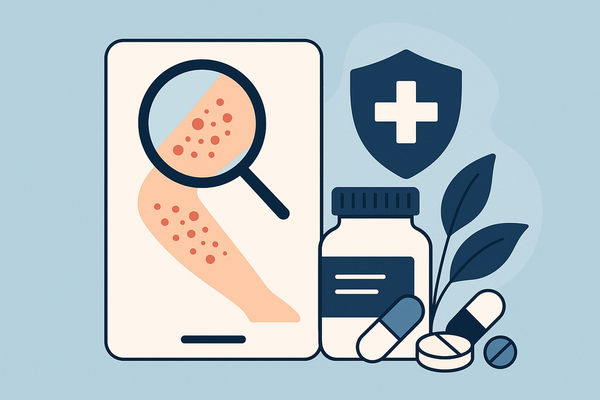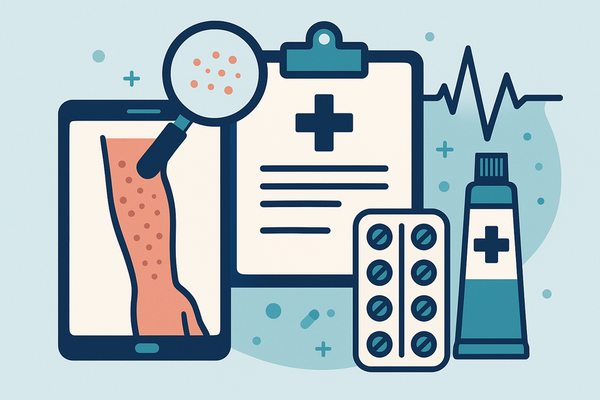Expert Guide to Diaper Rash Treatment Fast
Discover expert tips for diaper rash treatment fast, natural baby heat rash remedies, eczema identification, cradle cap vs seborrheic dermatitis, and safe creams.

Estimated reading time: 7 minutes
Key Takeaways
- Speedy diaper changes and barrier creams (zinc oxide or petroleum jelly) are essential for rapid diaper rash relief.
- Breathable fabrics, cool environments, and Oatmeal baths soothe baby heat rash effectively.
- Early eczema recognition—dry, itchy patches—and consistent moisturization prevent flare-ups.
- Cradle cap (scalp only) vs seborrheic dermatitis (wider areas) requires tailored scalp care.
- Safe creams free of fragrances, dyes, and steroids protect infant skin: seek zinc oxide, ceramides, petrolatum.
Table of Contents
- Section 1: Diaper Rash Treatment Fast
- Section 2: Baby Heat Rash Remedies
- Section 3: Recognizing Eczema in Babies
- Section 4: Cradle Cap vs Seborrheic Dermatitis
- Section 5: Safe Creams for Infant Rash
- Conclusion
- FAQ
Section 1: Diaper Rash Treatment Fast
Define Diaper Rash
Diaper rash (diaper dermatitis) appears as red, tender patches in the diaper area. It develops when moisture, friction, and irritants from urine or stool weaken the skin barrier. Rashes can arise rapidly—sometimes overnight—if the baby remains in a wet diaper too long.
Causes and Rapid Onset
- Warm, moist environment under diapers fosters bacteria and yeast growth.
- Friction from tight or poorly fitting diapers aggravates tender skin.
- Chemical irritants (fragrances, dyes, harsh detergents) strip protective oils.
Quick and Effective Remedies
- Frequent diaper changes—at least every 2 hours or immediately after soiling—to keep skin dry and clean.
- Gentle cleaning: use plain water with a soft cloth or fragrance-free, alcohol-free wipes.
- Diaper-free time: lay the baby on a water-resistant pad for 10–15 minutes, several times a day, for air circulation.
- Super-absorbent disposable diapers reduce moisture contact.
- Barrier creams/ointments: apply zinc oxide (10–40%) or petroleum jelly at each change.
Prevention Techniques and Best Practices
- Proper diaper fit: snug enough to prevent leaks yet loose for air flow.
- Cloth diapers: use soft, fragrance-free detergents; rinse thoroughly.
- Prompt stool cleaning—ideally within minutes—to minimize irritant exposure.
When to Consult a Pediatrician
- Rash persists more than 3 days despite home care.
- Blisters, oozing, bleeding, or signs of infection.
- Fever or unusual fussiness with skin changes.
Section 2: Baby Heat Rash Remedies
Define Heat Rash
Heat rash (miliaria or prickly heat) is a cluster of tiny red bumps caused by blocked sweat ducts during overheating. It typically appears in skin folds (neck, underarms, groin) and may feel itchy or prickly.
Distinction from Diaper Rash
- Heat rash stems from sweat retention and heat—not urine or stool irritation.
- Bumps are uniform in flexural creases; diaper rash is localized to the diaper area.
Natural, Safe, Effective Remedies
- Lightweight clothing: choose breathable cotton or bamboo fabrics to wick moisture.
- Cool environment: keep rooms at 68–72°F; use fans or air conditioning.
- After bathing, gently pat skin dry; avoid oil-based lotions that clog pores.
- Cool compresses: apply a soft cloth soaked in cool water for 5–10 minutes.
- Oatmeal baths can reduce itching and calm irritated skin.
Lifestyle and Environmental Adjustments
- Layering: dress baby in one extra layer than an adult; remove layers if baby feels hot.
- Monitor humidity: use a hygrometer; aim for balanced indoor moisture.
- Outdoor play: use a misting spray or shaded water play to cool skin on hot days via prevent heat rash habits.
Section 3: Recognizing Eczema in Babies
Eczema in babies often appears as red, itchy patches on the cheeks, scalp, and outside of limbs. High-quality eczema in babies pictures can help distinguish atopic dermatitis from other rashes.
Define Eczema (Atopic Dermatitis)
Eczema is a chronic inflammatory condition where the skin barrier is compromised, leading to dryness, itching, and inflammation.
Common Signs and Triggers
- Dry, scaly, crusted patches that may weep or ooze.
- Intense itching—babies may rub their skin or have restless sleep.
- Triggers: low humidity, heat, irritant soaps/detergents, allergenic foods.
Home Care and Management
- Bathing: lukewarm water for 5–10 minutes; use fragrance-free, pH-balanced cleansers.
- Immediate moisturization: within 3 minutes after bathing, apply a thick, fragrance-free ointment (petroleum jelly or ceramide-based cream).
- Soft fabrics: dress baby in 100% cotton; avoid wool or tight synthetics.
- Trigger avoidance: switch to hypoallergenic detergents; trim nails to prevent scratching.
Section 4: Cradle Cap vs Seborrheic Dermatitis
Define Cradle Cap vs Seborrheic Dermatitis
- Cradle cap: infantile seborrheic dermatitis limited to the scalp, with greasy, yellow-brown scales.
- Seborrheic dermatitis: can affect scalp, face (eyebrows, eyelids), behind ears, and neck folds; may cause mild itching.
Similarities and Differences
- Both involve overproduction of sebum and yeast (Malassezia species).
- Cradle cap is typically non-itchy and localized; seborrheic dermatitis may spread and irritate.
Safe Treatment Options
- Pre-wash oil massage: apply mineral oil or petroleum jelly to loosen scales for 15–20 minutes.
- Gentle cleansing: use mild baby shampoo (pH 5.5) to wash away debris.
- Soft brushing: use a soft-bristle baby brush to lift loosened flakes.
- Repeat 2–3 times per week until resolved.
- Consult a pediatric dermatologist if scales become thick, inflamed, or show infection.
Section 5: Safe Creams for Infant Rash
Importance of Safe Creams for Infant Rash
Infant skin is highly permeable, so choose pediatrician-approved, hypoallergenic products free from fragrances, dyes, and harsh preservatives.
Key Ingredients to Seek
- Zinc oxide (10–40%): offers physical barrier protection.
- Petrolatum/petroleum jelly: provides occlusive layer to seal in moisture.
- Medical-grade lanolin: smooths and softens skin without common allergens.
Ingredients to Avoid
- Topical steroids unless prescribed by a physician.
- Fragrances, parabens, formaldehyde releasers, and synthetic dyes.
Product Recommendations and Usage Tips
- Diaper rash creams: apply a thick layer of zinc oxide or petroleum jelly after each change; reapply before bedtime.
- Eczema treatments: choose ceramide-based emollient creams; apply twice daily and immediately post-bath.
- Patch testing: test a small amount on the forearm; wait 24 hours before full use.
Trustworthy Brands
- Desitin Rapid Relief Zinc Oxide Cream
- Aquaphor Baby Healing Ointment
- CeraVe Baby Moisturizing Cream
Conclusion
Prompt, targeted care is the cornerstone of healthy infant skin. For diaper rash, prioritize frequent changes, gentle cleaning, and barrier creams. Combat heat rash with breathable fabrics, cooling compresses, and oatmeal baths. Recognize eczema early—refer to eczema in babies pictures—and maintain a strict moisturizing routine. Differentiate cradle cap from seborrheic dermatitis for proper scalp care. Always select safe creams free from fragrances and harsh preservatives. Early intervention prevents complications such as secondary infections and prolonged discomfort.
Monitor your baby’s skin daily and consult a pediatrician if rashes persist beyond 3 days, worsen, or show signs of infection. For tips on tracking rash progress over time, see track rash progress.

FAQ
How can I relieve diaper rash quickly?
Change diapers often (every 2 hours), cleanse gently with water or alcohol-free wipes, and apply a barrier cream like zinc oxide or petroleum jelly at each change.
What home remedies help baby heat rash?
Dress your baby in lightweight, breathable fabrics; keep rooms cool; use cool compresses; and try oatmeal baths to soothe itching.
When should I see a doctor for a baby rash?
Consult a pediatrician if a rash lasts more than 3 days, shows signs of infection (blisters, oozing, fever), or if your baby is unusually fussy.





